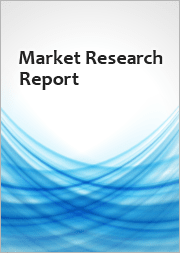
|
시장보고서
상품코드
1645286
일본의 매트리스용 접착제 시장의 평가 : 접착제 유형별(수성, 용제 베이스, 핫멜트), 용도별(메모리 폼 매트리스, 라텍스 폼 매트리스, 젤 폼 매트리스), 지역별, 기회 및 예측, 2018 - 2032년Japan Adhesives for Mattress Market Assessment, By Adhesives Type [Water Based, Solvent Based, Hotmelt], By Application [Memory Foam Mattress, Latex Foam Mattress, Gel Foam Mattress], By Region, Opportunities and Forecast, FY2018-FY2032F |
||||||
일본의 매트리스용 접착제 시장은 2025-2032년도의 예측기간 중에 CAGR 4.85%기록할 것으로 예상되며, 2024년도의 2억 7,015만 달러에서 2032년에는 3억 9,460만 달러로 성장할 것으로 예측됩니다. 일본의 매트리스용 접착제 시장은 쾌적하고 내구성 있는 침구 제품에 대한 수요 증가, 신축 증가, 매트리스 수요의 추진에 의해 꾸준히 성장하고 있습니다. 매트리스 제조에서 접착제는 발포체, 라텍스, 직물과 같은 여러 층을 접착하고 오래도록 설계된 단일 제품으로 만드는 중요한 부품입니다.
또한 일본 매트리스 시장은 소비자의 가처분소득 증가와 라이프스타일의 진화에 의해 크게 견인되고 있습니다. 가처분 소득이 증가함에 따라 개인은 고품질의 수면 제품에 대한 투자를 더 하여 매트리스 수요 증가로 이어지고 있습니다. 주택, 호스피탈리티, 헬스케어 등, 구조화된 소매 및 소비 섹터의 확대가 일본의 매트리스 수요를 크게 증가시키고 있습니다. 지리적으로는 일본의 중부지방, 특히 관동지방과 중부지방이 큰 시장기여자로 주목받고 있습니다. 관동지방은 수도권을 중심으로 일본에서 가장 인구가 많고 도시화가 진행되고 있는 지역입니다. 2023년 10월 도쿄의 총 인구는 1,408만명으로, 일본의 총 인구의 11.3%에 해당합니다. 또한 중부는 대규모 산업 및 제조업으로 알려져 있습니다. 고급 침구를 요구하는 소비자가 이 지역에 집중하고 있기 때문에 두 지역은 매트리스 제조에 사용되는 접착제 수요의 중요한 원동력입니다.
목차
제1장 프로젝트의 범위와 정의
제2장 조사 방법
제3장 주요 요약
제4장 고객의 목소리
- 구매 결정 시 고려되는 요소
- 제품 성능
- 품질과 신뢰성
- 컴플라이언스 및 표준
- 비용과 가용성
- 애프터 서포트
제5장 일본 매트리스용 접착제 시장 전망
- 시장 규모의 분석과 예측
- 금액별
- 수량별
- 시장 점유율 분석과 예측
- 유형별
- 수성
- 용제 베이스
- 핫멜트
- 용도별
- 메모리 폼 매트리스
- 라텍스 폼 매트리스
- 젤 폼 매트리스
- 지역별
- 북부(홋카이도·도호쿠)
- 중부(관동 및 중부)
- 남부(간사이, 주고쿠, 시코쿠, 규슈와 오키나와)
- 기업별 시장 점유율 분석(주요 5개사 및 기타- 금액별, 2024년도)
- 유형별
- 시장 맵 분석, 2024년도
- 유형별
- 용도별
- 지역별
모든 부문은 모든 포함된 지역에 제공됩니다.
제6장 Porter's Five Forces 분석
제7장 PESTLE 분석
제8장 가격 분석
제9장 시장 역학
- 시장 성장 촉진요인
- 시장의 과제
제10장 시장 동향과 발전
제11장 사례 연구
제12장 경쟁 구도
- 시장 리더 주요 5개사의 경쟁 매트릭스
- 상위 5개 기업의 SWOT 분석
- 주요 기업 주요 10개사 시장 상황
- Bostik-Nitta Co., Ltd.
- 기업 개요
- 주요 경영진
- 제품 및 서비스
- 재무 상황(보고대로)
- 주요 시장 포커스와 지리적 존재
- 최근 동향,협업,파트너십,합병과 인수
- Henkel Japan Ltd.
- Yasuhara Chemical Co., Ltd
- Moresco Corporation
- Oshika Corporation
- Asahi Chemical Synthetic Co., Ltd.
- Sekisui-Fuller Co., Ltd.
- Bostik-Nitta Co., Ltd.
위에 언급된 회사들은 시장 점유율 순위와 관련이 없으며, 조사 과정에서 얻은 정보에 따라 변경될 수 있습니다.
제13장 전략적 제안
제14장 기업 소개와 면책사항
SHW 25.02.21Japan adhesives for mattress market is projected to witness a CAGR of 4.85% during the forecast period FY2025-FY2032, growing from USD 270.15 million in FY2024 to USD 394.60 million in FY2032. Japan adhesives market for mattresses is growing steadily due to increasing demand for comfortable and durable bedding products, along with growth in new construction, propelling the demand for mattresses in the country. In mattress manufacturing, adhesives are key components that bond several layers of material such as foam, latex, and fabrics, into a single product designed to last.
Additionally, the mattress market in Japan is majorly driven by rising discretionary income and evolving lifestyles among consumers. As disposable incomes increase, individuals are more willing to invest in quality sleep products, leading to heightened demand for mattresses. The expansion of structured retail and consumer sectors, including housing, hospitality, and healthcare, significantly boosts mattress demand in Japan. Geographically, the central region of Japan, especially the Kanto and Chubu areas, is noteworthy as a significant market contributor. The Kanto region, with the Tokyo metropolitan area on its side, is the most populous and urbanized part of Japan. In October 2023, Tokyo's total population was 14.08 million persons, which is 11.3% of the country's total population. Further, Chubu is known for its large-scale industrial and manufacturing work. Both regions are significant drivers of demand for adhesives used in mattress production given the high concentration of consumers in these regions seeking premium bedding solutions.
Increase in Mattress Comfort and Durability Increasing Japan's Need for Mattress Adhesives
Increased consciousness towards quality sleep in Japan coupled with rising demand for comfortable and durable mattresses has also increased readiness to spend on high-quality bedding that will give them better support and comfort, reflecting direct influences in the adhesives market. Adhesives are critical to ensure that the multiple layers of materials used in a mattress, such as foam, fabric, and springs, are well secured, providing both durability and comfort. The heightened demand for mattresses from consumers wanting to experience improved quality of sleep has seen manufacturers shift towards the utilization of advanced adhesive technologies in a bid to improve the life and performance of the resultant products. The two main mattress functions that adhesives employ are layer separation prevention and storage of the mattress structure after a long period of time. Furthermore, the rising demand by consumers for softer, more durable mattresses pushes the market of adhesives in Japan, with manufacturers trying their best to guarantee customer satisfaction.
According to Observatory of Economic Complexity (OEC) reports indicate that in FY2022, the total export value of Mattresses originating from Japan stood at USD 32.7 million. The country stood as the world's 51st largest exporter of Mattresses and ranked as the 612th most exported product from Japan.
Emerging Bedding Market Driving Growth in the Japanese Adhesives Market for Mattresses
The expansion of the Japanese bedding market, prompted by an increase in disposable incomes and improvement in urbanization with a rising focus on comfort at home, has positively contributed to its growth. A rise in demand from Japanese consumers investing more in home furnishings through high-end bedding products increases the demand for adhesives in the production of mattresses. A real estate boom in Tokyo and Nagoya urban centers has also contributed to this growth since new housing developments have boosted demands for quality mattresses and furniture.
Modern mattresses are often made from multiple layers and hybrid designs incorporating different materials. For example, in September 2023, Paramount Bed Co., Mitsui Chemicals, and Rever Corporation announced that their initiative for the chemical recycling of polyurethane in mattresses has been selected by Japan's Ministry of the Environment for its FY2023 Project to Promote Decarbonized Circular Economy Systems. This project aims to develop plastic recycling processes and reduce CO2 emissions through demonstration projects.
Adhesives are required for mattresses assembly. The end-product must be satisfactory to consumers in comfort, durability, and performance. The market for adhesives, particularly high-performance solutions tailored to the needs of luxury mattress manufacturers, is expected to remain stable in Japan due to the country's expanding bedding demand.
Solvent-Based Adhesives are Mostly used Adhesive in Mattress Manufacturing
Solvent-based adhesives are among the most widely used substances in mattress manufacturing due to their versatility and strong bonding capabilities. This type of adhesive is typically applied to bond different layers of materials, such as foam, latex, and fabric, ensuring that the mattress is solid and long-lasting. Additionally, solvent-based adhesives dry faster and maintain exceptional strength even under extreme conditions.
However, while solvent-based adhesives are still prevalent because of their excellent bonding properties, the increasing shift toward green alternatives, such as water-based adhesives, poses a significant challenge to their continued use. Nonetheless, in the Japanese mattress manufacturing industry, where high-strength bonding is essential, solvent-based adhesives remain crucial.
Central Region Dominates the Mattress Adhesives Market
The central region of Japan, which encompasses the Kanto and Chubu areas, is a substantial market driver for the mattress adhesives market. The Kanto region is the most urbanized and populous region of Japan, hosting the highly developed urban area, which includes Tokyo, and nearby cities. It is, therefore, an important market for premium bedding products. The region also has a high-class population whose quality-of-life orientation seeks high-quality mattresses, which directly incites demand for advanced adhesives for the mattresses' production.
Furthermore, the Chubu region is a core industrial city where Nagoya plays a central role. The region houses an impressive furniture and bedding manufacturing sector that is creating a huge demand. Chubu is characterized by a solid manufacturing base and proximity to cities and rural areas, thus having a significant role in the mattress adhesives market. The need for adhesives in mattresses, particularly high-performance ones that meet additional needs from customers in these areas, will increase along with Kanto and Chubu's growth.
In January 2024, Inter IKEA Systems B.V., opened its first store in Japan's north Kanto region, Maebashi, Gunma Prefecture. The tenth store in Japan, the store offers affordable and sustainable home furnishing solutions, furniture, and services. Located two hours north of Tokyo, the store caters to the needs of the region's over seven million people.
Future Market Scenario (FY2025 - FY2032F)
Continued urbanization in major cities like Tokyo, Kanagawa and Nagoya will maintain the impetus of demand for high quality mattresses, driving in its wake advances in adhesive technology.
In coming years, new innovative technologies in adhesives will continue to make mattress manufacturing even more efficient through stronger bonding and reducing drying time.
The hybrid and multi-layered mattress segment are growing at a rapidly increasing rate, thereby requiring effective adhesives for bonding materials.
The smart mattresses trend, envisaged to bring in more technology as a step toward achieving better sleep quality, opens greater scope for adhesives with improved performance.
With the expansion of online retail channels of mattresses, the market accessibility for adhesives is likely to increase, which will lead to the demand for adhesives in mattress manufacturing.
Key Players Landscape and Outlook
The landscape of key players in the adhesives market for mattresses in Japan is characterized by a significant number of companies. Prominent players are investing in innovative adhesive solutions tailored for various applications, including the mattress industry. These companies focus on developing high-performance adhesives that enhance product quality and durability, catering to the specific needs of manufacturers. They specialize in industrial coatings and adhesives, emphasizing the importance of customer satisfaction and product performance. Additionally, these companies are committed to sustainability and innovation, ensuring that their adhesive products meet the evolving demands of the mattress market. Together, they dominate the Japanese adhesives market for mattresses, with a strong focus on quality, performance, and customer service.
In September 2020, Bostik-Nitta Co., Ltd., a subsidiary of the Arkema Group, announced the startup of its new, large-scale industrial adhesives plant in Japan. The additional capabilities enabled Bostik to better service its Japanese clientele in the steadily expanding markets for electronics, diapers, cushioning, packaging, labeling, and transportation.
Table of Contents
1. Project Scope and Definitions
2. Research Methodology
3. Executive Summary
4. Voice of Customer
- 4.1. Factors Considered in Purchase Decisions
- 4.1.1. Product Performance
- 4.1.2. Quality and Reliability
- 4.1.3. Compliance and Standards
- 4.1.4. Cost and Availability
- 4.1.5. After-Sales Support
5. Japan Adhesives for Mattress Market Outlook, FY2018-FY2032F
- 5.1. Market Size Analysis & Forecast
- 5.1.1. By Value
- 5.1.2. By Volume
- 5.2. Market Share Analysis & Forecast
- 5.2.1. By Type
- 5.2.1.1. Water Based
- 5.2.1.2. Solvent Based
- 5.2.1.3. Hotmelt
- 5.2.2. By Application
- 5.2.2.1. Memory Foam Mattress
- 5.2.2.2. Latex Foam Mattress
- 5.2.2.3. Gel Foam Mattress
- 5.2.3. By Region
- 5.2.3.1. North [Hokkaido and Tohoku]
- 5.2.3.2. Central [Kanto and Chubu]
- 5.2.3.3. South [Kansai, Chugoku, Shikoku, and Kyushu & Okinawa]
- 5.2.4. By Company Market Share Analysis (Top 5 Companies and Others - By Value, FY2024)
- 5.2.1. By Type
- 5.3. Market Map Analysis, FY2024
- 5.3.1. By Type
- 5.3.2. By Application
- 5.3.3. By Region
All segments will be provided for all regions covered
6. Porter's Five Forces Analysis
7. PESTLE Analysis
8. Pricing Analysis
9. Market Dynamics
- 9.1. Market Drivers
- 9.2. Market Challenges
10. Market Trends and Developments
11. Case Studies
12. Competitive Landscape
- 12.1. Competition Matrix of Top 5 Market Leaders
- 12.2. SWOT Analysis for Top 5 Players
- 12.3. Key Players Landscape for Top 10 Market Players
- 12.3.1. Bostik-Nitta Co., Ltd.
- 12.3.1.1. Company Details
- 12.3.1.2. Key Management Personnel
- 12.3.1.3. Products and Services
- 12.3.1.4. Financials (As Reported)
- 12.3.1.5. Key Market Focus and Geographical Presence
- 12.3.1.6. Recent Developments/Collaborations/Partnerships/Mergers and Acquisition
- 12.3.2. Henkel Japan Ltd.
- 12.3.3. Yasuhara Chemical Co., Ltd
- 12.3.4. Moresco Corporation
- 12.3.5. Oshika Corporation
- 12.3.6. Asahi Chemical Synthetic Co., Ltd.
- 12.3.7. Sekisui-Fuller Co., Ltd.
- 12.3.1. Bostik-Nitta Co., Ltd.
Companies mentioned above DO NOT hold any order as per market share and can be changed as per information available during research work.



















